Tragedies like Hurricane Katrina in 2005 have shaped a new era of disaster preparedness for skilled nursing and assisted living facilities across the country, with more providers taking proactive steps to become part of governmental emergency planning to keep residents as safe as possible before, during, and after any manner of threat.
Providers are also advocating for legislative and regulatory changes to upgrade the status of long term and post acute care facilities in the eyes of first responders and emergency planners at all levels of government. Once often treated like a retail outlet in the pecking order for emergency utility restoration, some locales now recognize long term care providers for their vital role in providing health care services and have made nursing facility utility restoration a priority.
Threats to the normal operation of a long term care facility come in many forms, be they from fire or power outages or seasonal weather events, such as hurricanes, tornados, and floods. Disaster planning also comes into play when incidents of food-borne illness, flu, or community-based alerts created by terrorism, a train derailment, or police action occur, for example.
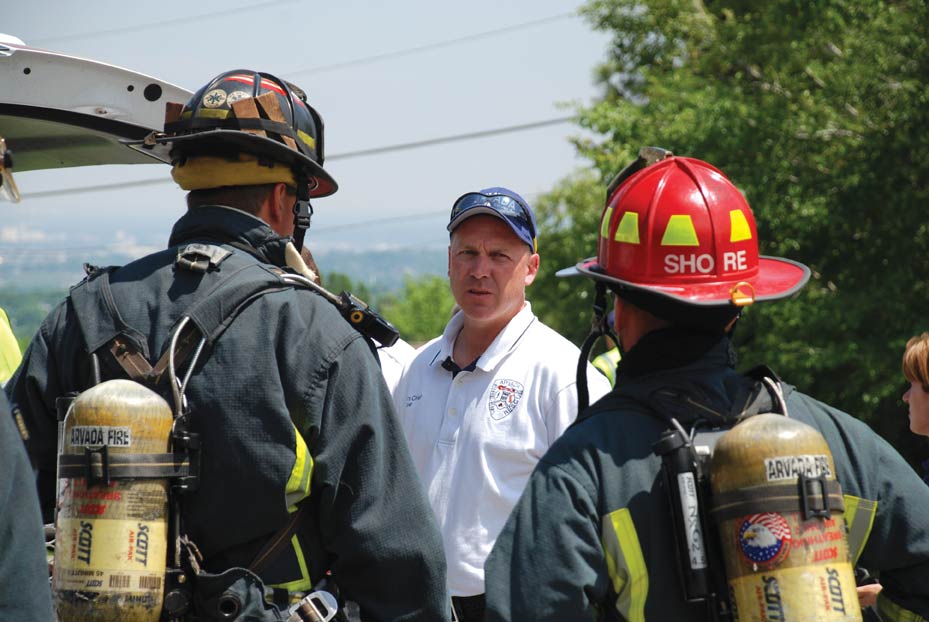
Experts say the threats seem to be growing, notably in the area of natural disasters, but as they increase so does the assistance being made available for implementing effective disaster plans. “The reality is that we have a pretty awesome responsibility. The people in our facilities are fragile and not resilient, and the need for preparedness has been ever-increasing over time for skilled nursing facilities and assisted living,” says Jocelyn Montgomery, director of clinical affairs for the California Association of Health Facilities (CAHF).
Challenges Abound
Preparing for emergencies has become even more trying because skilled nursing beds are now occupied by residents with much higher acuity levels than seen only 10 to 15 years ago, she notes. “Anything that disrupts service poses a health and safety threat. We all have the sense that it is not going to happen to us, but you need to have back-up systems in place,” Montgomery says.
One look at the Federal Emergency Management Agency website shows the plethora of potential disasters the federal government sees as worthy of special mention. These include dam failures, tornados, volcanoes, wildfires, winter storms, terrorism, hurricanes, landslides, heat, floods, hazardous materials, earthquakes, chemical events, nuclear power plants, and tsunamis.
Where a facility is located dictates which unique threats are most important, says Montgomery. She notes that California has earthquakes to contend with, as well as wildfires and landslides.
“In Iowa the most frequent hazard is tornados,” says Patricia Giorgio, president of Evergreen Estates, a family-owned residential living provider in Cedar Rapids. So, her staff conduct an annual tornado drill to stay prepared for such an occurrence.
It was actually floods that caused the most recent emergency on a wide scale in the area in June 2008, she notes, when
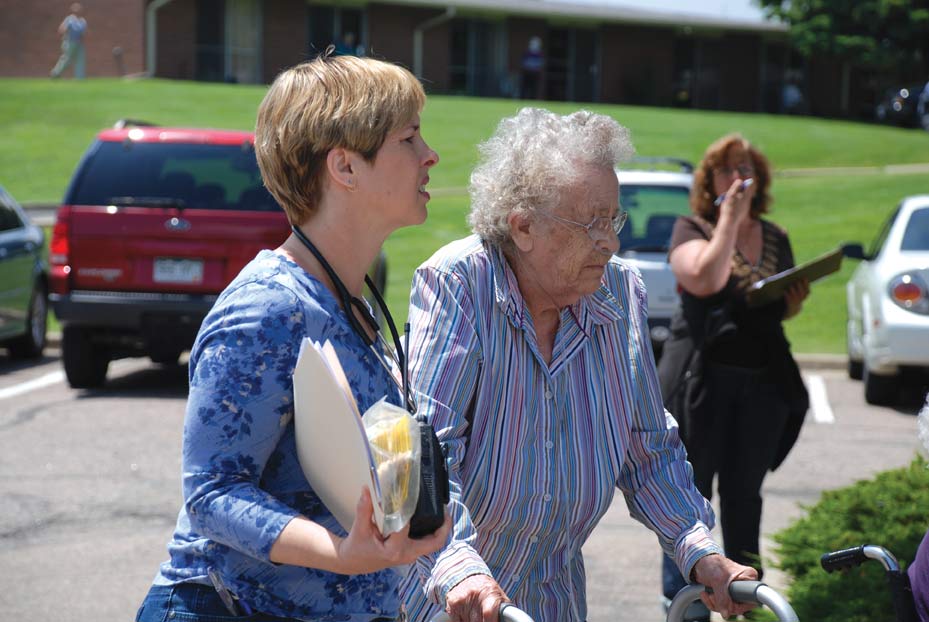
the Cedar River crested beyond a 500-year floodplain, wreaking havoc and forcing local hospitals to transfer patients to long term care facilities out of the way of the water, Giorgio says.
In Vermont, precautions are taken for nuclear power, says Deb Choma, administrator of residential care home Shard Villa in Salisbury, Vt. The Vermont Yankee plant in Vernon creates considerations for how to evacuate residents if there were ever a major problem, Choma notes.
But it was a recent train derailment with the potential for a chemical leak that sent her back to ensure her facility was ready. “All of us were in Montpelier [at a meeting] when cell phones went off and all had to go back to our facilities to prepare for a potential problem,” Choma says.
Getting A Seat At The Table
While being ready for an emergency has always been a priority for providers, it was made more so over the past decade. Sometimes it takes a dramatic event, even ones as tragic as Katrina or the Sept. 11 terror attacks in 2001, to shock the system and change the way things are done. Learning from mistakes and taking into account real-life lessons have given providers new tools for ensuring that quality care extends to residents even in the most trying of times.
“We’ve learned a lot over the past six years,” says LuMarie Polivka-West, senior director of policy for the Florida Health Care Association (FHCA) and a member of the American Health Care Association’s (AHCA’s) Disaster Planning Committee, referring to the time span from the especially trying hurricane seasons of 2004 and 2005 to present day.
She has been a major mover in the evaluation of what went wrong during the 2004-2005 hurricane seasons and worked with a number of long term care leaders in the first Gulf Coast Hurricane Summits in February 2006 and then in 2007 to assess what could be done to better protect long term care residents during emergencies.
The summits, supported by a grant to FHCA from the John A. Hartford Foundation in response to the events of Hurricanes Katrina, Rita, and Wilma, noted that long term care was an afterthought in existing emergency response systems and plans. “We learned we did not have a seat at the table,” Polivka-West says.
Or, as Amy Berman, senior program officer at the Hartford Foundation in New York City, says, “Long term care was at the same level as a 7-Eleven for utility restoration.”
Vulnerable medically frail elderly and disabled patients and residents were largely dependent on the limited capability of each individual provider and their individual disaster plan, which was not coordinated with governmental emergency efforts, Polivka-West says.
The summits recommended that the then National Response Plan incorporate long term care facilities in its unified, all-discipline, all-hazards approach to disaster planning, response, and recovery, she says.
Tragedy Spurs Action
The obvious reason for the prioritization of disaster preparedness for the long term care community was the direct result of the awful deaths brought about by Katrina. “When Katrina, Rita, and Wilma struck in 2005, older adults were disproportionately affected. Two-thirds of deaths in New Orleans were age 65 or older. Many of the deaths, including the tragedy at St. Rita’s, occurred after the hurricanes had passed,” says Berman.
St. Rita’s was a nursing facility in the St. Bernard section of New Orleans where 34 residents died after the building flooded as a result of Katrina. Seventy-eight nursing facility residents in New Orleans in total lost their lives during Katrina, and 23 long term care residents were killed in a bus accident in Texas during evacuations caused by Hurricane Rita.
Following those tragedies, the Hartford Foundation funded a three-year, $361,556 grant titled “Hurricane and Disaster Preparedness for Long-Term Care Facilities,” administer
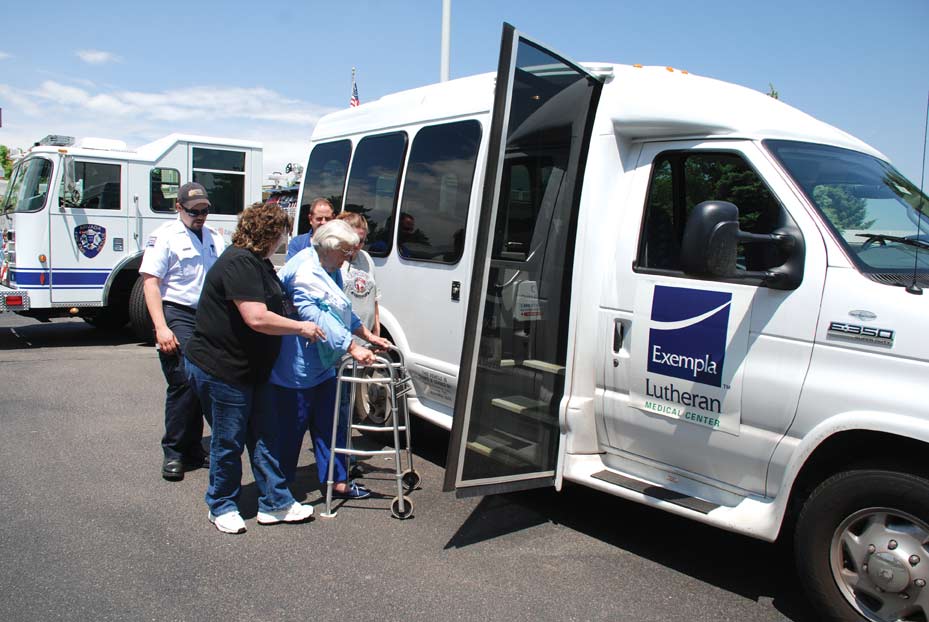
ed by FHCA. As a result of the grant, nursing facilities in Alabama, Florida, Louisiana, Mississippi, and Texas are now classified as health care providers, giving them priority for utility restoration. FHCA in turn has spearheaded the creation of the Emergency Management Guide for Nursing Homes, with AHCA.
To Berman, frail, older adults in nursing facilities were at risk because the facilities were (and are) excluded from the National Response Plan. “That meant that, unlike hospitals, nursing homes were not prioritized for restoration of electrical power and telephone service,” she says. “Restoration of utilities could be a matter of life and death for a nursing home resident. Without air conditioning or refrigeration for medication, older adults would perish.”
There was also a lack of guidance for evacuation versus sheltering in place. “Sheltering in place is generally preferred given that high-acuity patients could be harmed in an evacuation. But there needed to be an ethical informed process to determine whether to evacuate or shelter-in-place,” Berman says. “Nursing home contracts for transportation and other supports during the crisis were worthless. Buses and other needed resources were commandeered. When nursing homes weren’t integrated into disaster planning efforts, their own plans became worthless.”
As a result of the changes in local and state policy, nursing facilities now have more access to resources for recovery, and the medical needs of the elderly are now recognized, including refrigeration for medications, air conditioning to avoid heat-related illnesses, and washing machines to keep elders’ linens and clothes clean, Berman says.
She points out that these changes bore fruit when in 2008, Hurricanes Gustav and Ike threatened Louisiana and Texas. Unlike in 2005, emergency officials routinely reported the numbers of nursing facility evacuations and acknowledged residents’ needs.
There are now explicit guidelines for decision making about evacuating the residents of long term care facilities. Several states, including Alabama, Mississippi, and Utah, have used state Department of Homeland Security funding to purchase satellite phones to bolster communications systems.
Resident tracking and case management have also been made a priority, she says. Sheltering in place is preferred, but in the case of evacuation, steps have been taken to keep track of long-term residents in a more effective manner.
Berman says Gulf Coast states have developed databases that track facility status and bed availability during disasters, but there remains an unmet goal to develop a universal patient identification system since privacy and dignity rules prevent nursing facilities from maintaining identification labeling, such as a Medicare identification number, on individual patients.
Florida Sees Success, Even In Face Of Storms
FHCA is on the frontlines of disaster planning because of the threats posed by frequent hurricanes. When Hurricane Charley hit on Aug. 13, 2004, Polivka-West says the state’s long term care facilities had to grapple with evacuating more than 10,000 residents from the path of the storm from Tampa to Orlando.
“By pulling together we had no deaths in the 2004-2005 hurricane seasons,” she says, noting this good fortune came despite the physical damage to buildings, including one facility losing its roof to Charley.
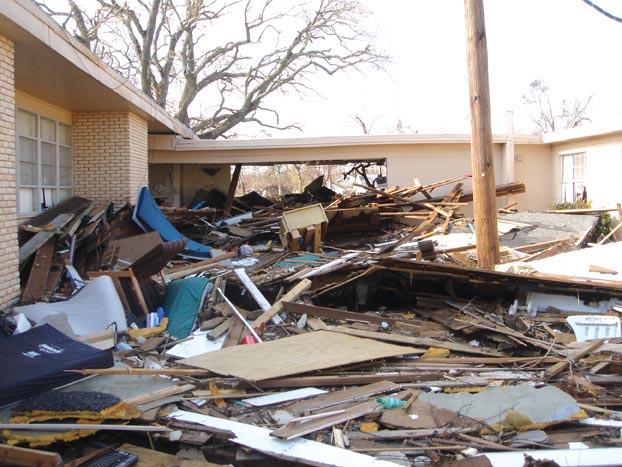
Long term care providers are now part of the Emergency Operations Center in Florida and are active in communicating with first responders on the unique needs of the frail and elderly in facilities across the spectrum of long term care, Polivka-West adds.
Berman says Florida has long been a model state for long term care providers. “Florida was an exception, a model state. Even in 2005, Florida was a model state. Florida has never lost a nursing home resident in an emergency because the needs of nursing homes are and were integrated into the state’s response,” Berman says.
In working with FHCA over the past five years, the Hartford Foundation-funded effort has produced the first national decision-making guidelines for evacuation in disasters.
A disaster planning software and guide now assists nursing facility administrators and staff prepare for future emergencies and create a plan specific to their facility in accordance with the federal “all-hazards” approach. And tabletop exercises help nursing facility staff practice the implementation of the plan.
“But perhaps the most impressive gains are on the state and federal levels. Needs of the nursing homes and the residents they care for are on the national agenda. Unfortunately, the National Response Plan still has not formalized this integration of nursing homes,” Berman says.
The nuts and bolts of preparing for a disaster are many. Steps include physically preparing by hardening a facility for inclement weather, purchasing extra supplies, and arranging evacuations if needed. What others have learned from past emergencies is vital to prepare for the next disaster, Polivka-West says.
How To Get Ready
Perhaps one of the most important first steps, beyond creating a plan, is to reach out to the local community and let them know what a long term care facility is, and is not, says Montgomery. “Work with the local community and don’t meet for the first time at a disaster. Every 9-11 anniversary is a good time to open your doors and offer refreshments to first responders and the like and build that rapport before an event happens,” Montgomery says.
Many long term care facilities are not called “nursing homes” or “nursing facilities” in their titles, confusing the uneducated in the community on what a “rehab center” is, for instance.
Montgomery says beyond letting the community know of your existence there are concrete steps to follow in disaster planning. “The first thing we talk to providers about is to do an evaluation of the hazards you are most likely to face. Know what your hazards are. There are lots of tools out there to do a hazard-vulnerability analysis. And go beyond what you see and talk to local response experts,” she says.
“Second, every long term care facility has to be ready for a disruption of infrastructure—water, fire, and power come to mind. This depends a lot on the geography. In California, there is a high risk of earthquake, and in certain parts of the state there is the threat of catastrophic quakes.”
She recalls that CAHF’s Disaster Preparedness Program (DPP) was helping facilities in Alaska where volcanoes are a danger, but discovered it wasn’t the obvious threat from an eruption or lava flow that worried people the most, but instead the ash that would cause respiratory issues for residents.
“There are the four Cs of an all-hazards analysis,” she says. These start with command and control. “You need good leadership and a good incident command system.”
The other Cs include obtaining critical resources, supplies and transportation, communications, and collaboration. “One of the top things identified in after-action reports is we could have done better in communications,” Montgomery says.
Collaboration is when facilities put off their rivalries in order to help each other out. “You have to stop your competition long enough to discuss who can do what for each other. All of us want these vulnerable people to be safe,” she says. Her last point is that an active training program is necessary to put every staff member on the same page for disaster. “You are not done until everyone is able to do the plan. An emergency no doubt will happen at 3 a.m. on a Sunday, and you may not be able to get there. The night shift, the charge nurse, everybody has to be ready to perform their role. They must know how to hold down the fort, save lives, know how to communicate,” Montgomery says.
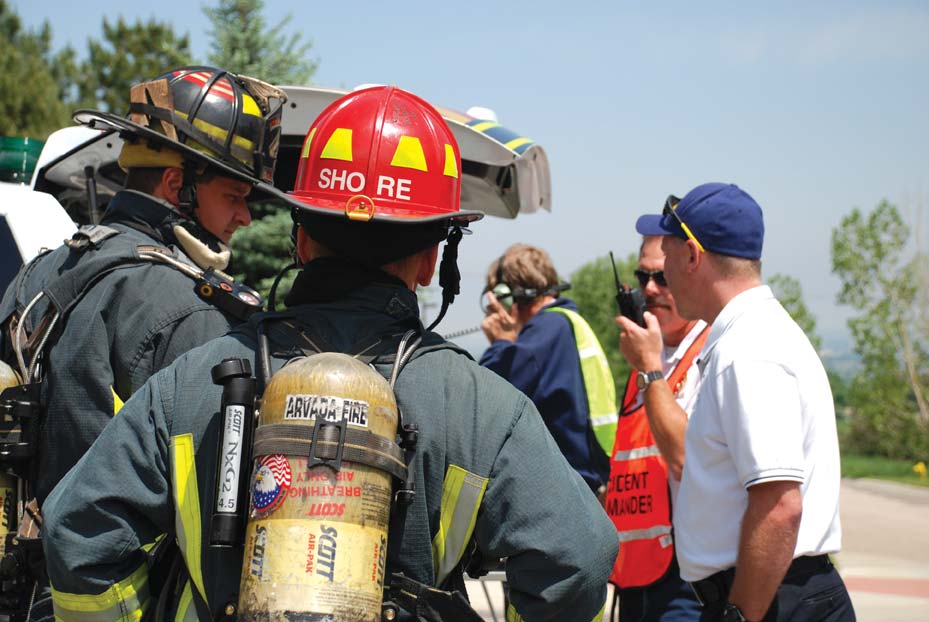
CAHF, like FHCA in Florida, is a leader in the field of long term care disaster preparedness. In September 2006, CAHF received funding through the California Department of Health Services to support the integration of long term care into the disaster planning and response efforts in California.
CAHF’s DPP provides services to all long term care facilities in the state, including and beyond its own membership. The DPP takes an all-hazards approach, and its work has several aspects, including education, coordination, and development of resources and tools.
A key project for DPP in 2006-2007 was the Pandemic Workbook for Long-Term Care and in July 2009, the Model Respiratory Protection Program, both being the first of their kind to be written specifically for long term care. Both also have worksheets and targeted tools and recommendations that providers can put into practice immediately.
Shelter In Place Or Evacuate?
The National Criteria for Evacuation Decision-Making in Nursing Homes by the Hartford Foundation, University of South Florida, and FHCA details the process in deciding whether to evacuate a facility. Within the report is the description of Homeland Security Presidential Directive 5, which called for a single, comprehensive system to enhance the ability of the United States to manage domestic incidents.
The National Incident Management System (NIMS) was rolled out in 2004 by the Department of Homeland Security, providing a template enabling all levels of government, the private sector, and nongovernmental organizations to work together during an incident. A key component of NIMS is the Incident Command System (ICS). The ICS is a standardized, all-hazard incident management concept, allowing its users to adopt an integrated organizational structure. ICS is structured to support five major functional areas: command, finance, logistics, operations, and planning.
When deciding whether to evacuate, a provider has to consider internal factors as well as outside forces. The criterion notes that resident acuity is a vital part of the evacuation equation. Residents with complex medical conditions, like radiation therapy or dialysis, may need to be evacuated to a hospital. Others may have special care needs, like respiratory treatment or pressure ulcers, that may be manageable in the nursing facility if their condition is stable.
The physical structure of the facility also plays a role in whether to abandon the property, the report said. Questions must be answered on whether the facility is hardened for an approaching storm, what hazards are immediately around the facility, like trees that can fall and destroy parts of buildings, as well as emergency power capacity and security.
Transportation is of course vital to an evacuation plan. Poor planning by the facility, incorrect assumptions regarding vehicle sources and availability, vehicles destroyed in the disaster, and the lack of properly sized vehicles are all factors that may prevent an evacuation.
Even when a provider decides to evacuate, there may be no place to evacuate to, the report said. Staff must also be in place for an evacuation, which may be difficult if roads are impassable or staff have their own families to tend to.
A decision to shelter in place requires the ability of a facility to be self-sufficient. There must be adequate supplies to do so. States vary on what supplies, and how much, are needed for sheltering in place, but for example, Florida law requires a one-week supply of nonperishable food and supplies, three gallons of water per resident per day during and after a disaster (defined as 72 hours), and one gallon per staff member per day, along with 72 hours worth of essential supplies. The Hartford report notes that it recommends seven to 10 days of supplies, well beyond the Florida law.
Location Matters
As for external factors, the report says a provider has to assess the nature of the emergency when deciding to evacuate. The time and scope of the event are important, but sometimes, like during a fire or gas leak, there is no time to assess such matters.
The location of a facility, whether it is in a prescribed zone, like a hurricane evacuation zone, will play a big role in deciding to stay or go, the report said. In the end, the report recommends precautions at every turn when planning for an evacuation or sheltering-in-place episode.
“Redundancy in disaster planning is strongly encouraged as it is certain that resources will be stretched thin by constantly changing conditions. Facilities are encouraged to implement a three-deep philosophy, entering into contracts with multiple vendors for the provision of food, water, emergency power, transportations, and emergency destinations,” the report said. “Most importantly, a facility’s ICS must be prepared to consider and act on a facility’s evacuation decision-making criteria,” it noted.
Polivka-West has noted that Hurricane Charley is a prime example of the conundrum of whether to evacuate or not. When the storm made landfall, it was not expected to turn into Port Charlotte, Fla., as a strong, Category 4 storm with winds up to 180 miles per hour. Roofs were being blown away from hospitals and long term care facilities across southwest Florida, up through Orlando, and northeast to Jacksonville.
The expanse of the storm left nursing facility and assisted living facility planners at a loss since emergency transport had collapsed as ambulances were being used by hospitals for evacuations. “Thousands of nursing home and assisted living facility residents were properly and effectively evacuated from the St. Petersburg and Tampa areas into central Florida around Orlando. Unfortunately, that is precisely the direction Hurricane Charley followed, damaging the facilities that had accepted the evacuees from Tampa and St. Petersburg,” she says.
The lesson learned was the importance of hardening physical plants even more to withstand the force of Charley’s winds because of the gaps in evacuation transportation.
Researchers from Brown University and the University of South Florida, with funding from the National Institute on Aging, found that because of the difficulty in evacuating nursing facility residents, it may be wiser to stay in buildings that will not be flooded, Polivka-West notes.
Other Lessons
The cause of disasters may differ, but a facility’s ability to handle disruptions comes down to the same issues: Is the power on, are the toilets working, is there enough food and shelter, and can residents be safely cared for as during a routine day?
Polivka-West says Florida providers have learned that cooperation is key. Even competitors give up food, beds, and supplies for residents in need of shelter during emergencies.
They also learned the importance of securing transportation for an evacuation and to gauge the need to do so in a careful manner. “The category of storm matters—3 to 4 you have to evacuate, 2 to 3 maybe not,” she says.
Other issues to track are making sure to update staff on training since “new staff have to be trained because they did not live through 2005.” There also has to be enough fuel to top off generators, seven days of food and water, and the sewage aspect.
Providers have learned how to capture sewage by using black garbage bags to secure and remove refuse when there is no service, which can be for a duration of two to three weeks if past experience is any measure.
Giorgio notes the importance of practice drills and to keep such drilling as simple as possible. “Drill and plan but keep it simple,” she says.
Other ideas she shares are to make sure to have an evacuation folder with basic information on each resident within, along with a recent photo and medical summary.
Where to evacuate is also something to make note of, Giorgio says. She worked with her local Lynn County officials to change the relocation spot for her residents from an elementary school to a high school, given the small size of the toilets at the lower school.
She also says working with insurance providers will help immensely by having representatives sit in on disaster planning meetings so everyone can understand the plan and possibly open the process to new ideas.
“Consider your insurance company as a partner—that is very important,” Giorgio says.
Call For More Reforms
AHCA and the National Center for Assisted Living have pushed for Congress to close the loop on a number of issues that prevent long term care facilities from receiving proper treatment in the wake of disasters. Even with the positive steps occurring at the state and local level, it says there needs to be action in Washington for ensuring equal treatment for long term care reforms:
- The National Disaster Medical System should be reconfigured to support the evacuation and care of nursing facility patients/residents, assisted living residents, and people residing in residential care facilities for the elderly and developmentally disabled.
- Electronic health records must be implemented. The lack of an interoperable electronic health information infrastructure that houses and allows access to personal health and medical information left evacuees of Katrina and Rita without sufficient records to allow caregivers to make appropriate and safe decisions about immediate care.
- The Stafford Act excludes for-profit nursing facilities that provide care to the publicly funded Medicare and Medicaid residents from receiving federal financial assistance during and after disasters. As a result, less than one third of all U.S. nursing facilities are eligible for critical and necessary federal assistance, with the one third representing the not-for-profit sector.
- Emergency communications must be improved. Weaknesses in the communications system may mean that local health care providers and facilities, as well as police, ambulance services, and others involved in search and rescue, will require satellite phone capacity, or broadband satellite Internet capacity, powered by generators.
- Federal government agencies need to work together in identifying requirements for long term care facilities in all-hazard approaches to disaster preparedness. An example of the lack of cohesion on this subject was the planning for the H1N1 Influenza A pandemic, when nursing facilities received conflicting guidance on the transmission dynamics of the flu.
- Finally, new protocols are necessary to improve communications and coordination between all providers and the local, state, and federal governments, with the National Response Framework as the guide for plan development at all levels.